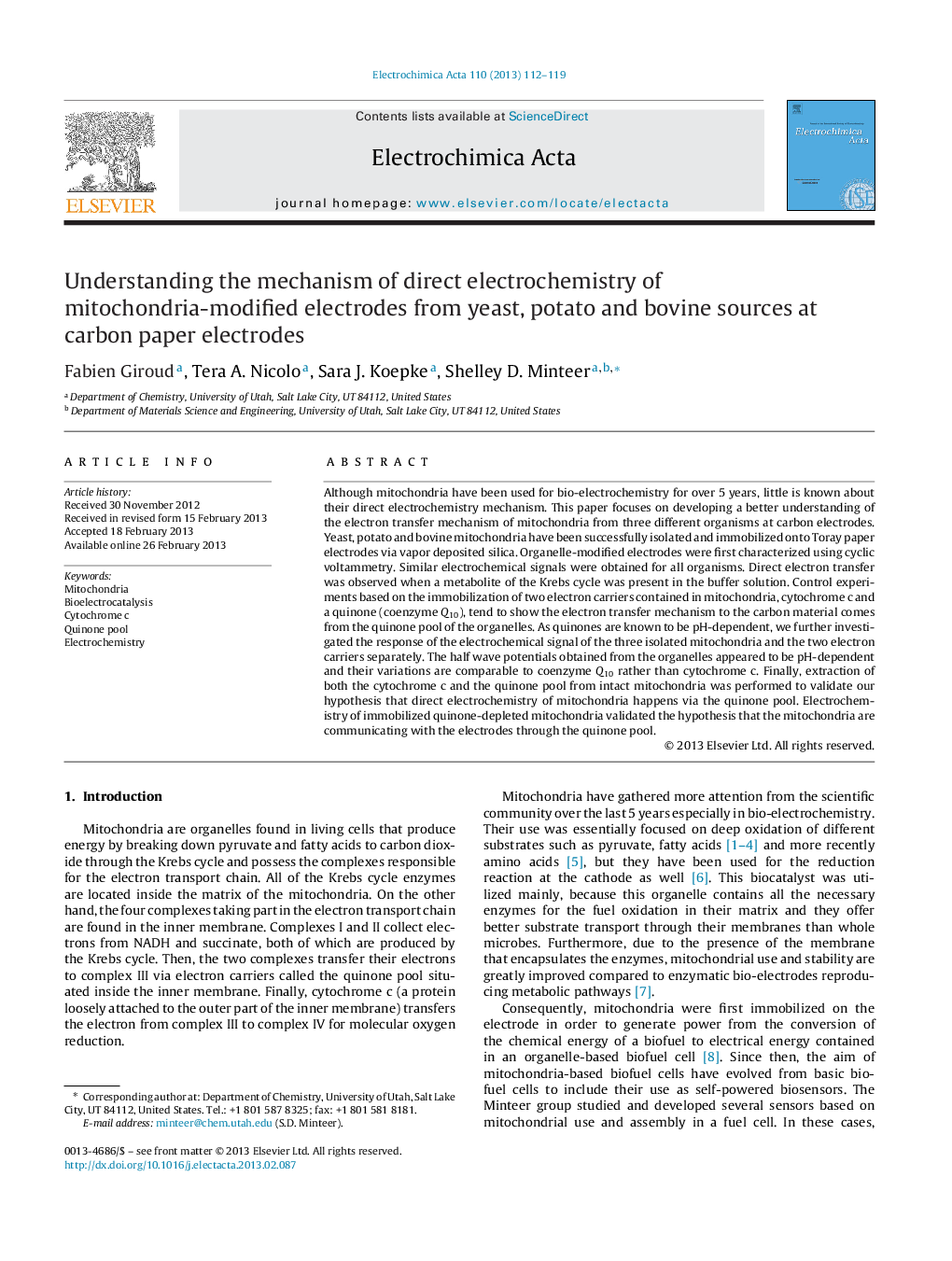| Article ID | Journal | Published Year | Pages | File Type |
|---|---|---|---|---|
| 6615364 | Electrochimica Acta | 2013 | 8 Pages |
Abstract
Although mitochondria have been used for bio-electrochemistry for over 5 years, little is known about their direct electrochemistry mechanism. This paper focuses on developing a better understanding of the electron transfer mechanism of mitochondria from three different organisms at carbon electrodes. Yeast, potato and bovine mitochondria have been successfully isolated and immobilized onto Toray paper electrodes via vapor deposited silica. Organelle-modified electrodes were first characterized using cyclic voltammetry. Similar electrochemical signals were obtained for all organisms. Direct electron transfer was observed when a metabolite of the Krebs cycle was present in the buffer solution. Control experiments based on the immobilization of two electron carriers contained in mitochondria, cytochrome c and a quinone (coenzyme Q10), tend to show the electron transfer mechanism to the carbon material comes from the quinone pool of the organelles. As quinones are known to be pH-dependent, we further investigated the response of the electrochemical signal of the three isolated mitochondria and the two electron carriers separately. The half wave potentials obtained from the organelles appeared to be pH-dependent and their variations are comparable to coenzyme Q10 rather than cytochrome c. Finally, extraction of both the cytochrome c and the quinone pool from intact mitochondria was performed to validate our hypothesis that direct electrochemistry of mitochondria happens via the quinone pool. Electrochemistry of immobilized quinone-depleted mitochondria validated the hypothesis that the mitochondria are communicating with the electrodes through the quinone pool.
Related Topics
Physical Sciences and Engineering
Chemical Engineering
Chemical Engineering (General)
Authors
Fabien Giroud, Tera A. Nicolo, Sara J. Koepke, Shelley D. Minteer,
